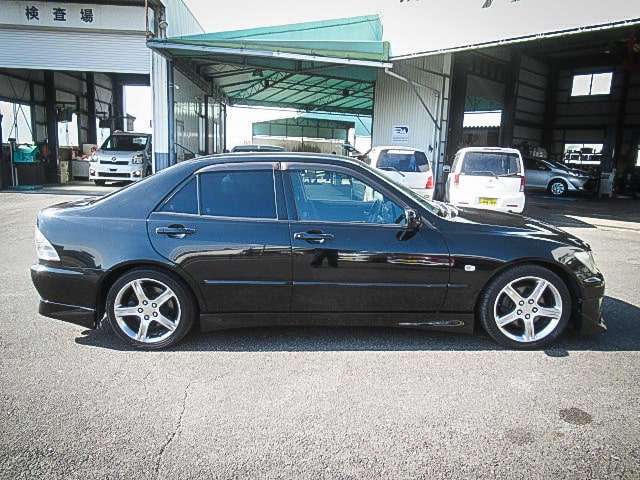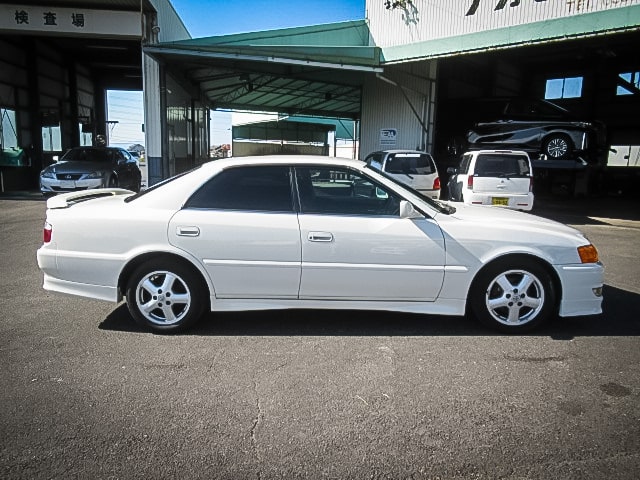Jurojin JDM Imports
Our Goal
Get the best JDM car importing experience with Jurojin’s dedicated team. Our highly knowledgeable specialists are always available 24/7 to provide you with personalized, expert guidance. With lightning-fast response times, you’ll never have to wait for an answer from other importers.
Our top priority is making the car importing process as seamless and accessible as possible for everyone.
We’ve revolutionized the industry by taking care of all the heavy lifting for you. All you have to do is select the car you want, choose pick-up or delivery, and schedule an out of state inspection. With Jurojin, importing your dream JDM car has never been easier.
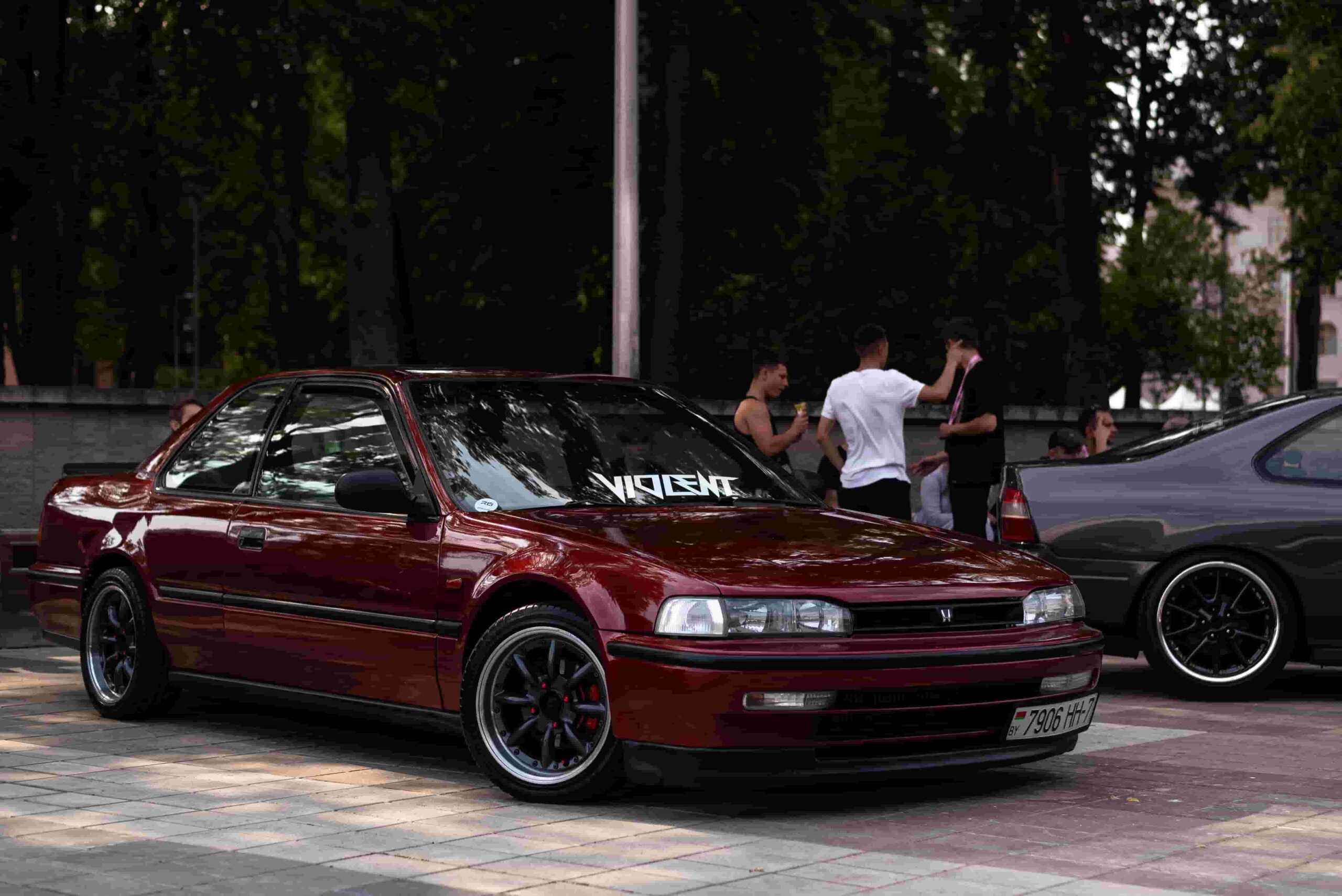
What We Do
We take the work off your hands
At Jurojin JDM Imports, we simplify the process of importing a JDM car by providing a personalized experience to each customer. We understand the challenge of buying a car sight unseen, which is why we’re committed to delivering the best JDM broker service. With a focus on import quality, vehicle condition, and customer satisfaction, we’ve established a strong reputation serving customers across the world. Our passion for JDM cars has allowed us to turn our hobby into a successful business.
We value your feedback and are dedicated to providing the highest level of customer service. For any inquiries or questions, please don’t hesitate to reach out to us.
- We handle the search
- We handle the paperwork
- We handle shipping
- Refundable Deposit
We handle the search
Our team searches the auctions daily to find you exactly what you’re looking for, we know which cars to not waste time on and which may be a great deal.
We handle the paperwork
We do all the paperwork for you to avoid mistakes and make your life easier. Japanese paperwork can be confusing and extremely difficult to manage, papers must be translated and in proper format for the U.S. customs.
We handle shipping
We deal with the stresses of shipping logistics so you don’t have to. We arrange shipment from the auction house to the vessel, and the vessel to North Carolina! We also handle all the shipping insurance so your car is safe.
Refundable Deposit
Our deposit is now fully refundable with no time limit and absolutely no catches. Enjoy a fully tailored and unique shopping experience free of charge, if we can’t find what you’re looking for or you change your mind, that’s fine.
Our Reviews
What's being said about us
Our reviews speak for themselves…
Table of contents:
- Why you should import a JDM car instead of buying locally.
- How to import a car from Japan toNorth Carolina.
- Rules & Regulations for importing a JDM car to North Carolina.
- The process of importing a JDM car, how to import with us.
- The JDM car shipping process.
- Shipping explained RO/RO VS Container.
- Our most recent JDM Imports.
- Frequently asked questions.
Why you should import a JDM car instead of buying locally.
If you’re wondering whether it’s worth importing a Japanese car and considering skipping the extra time to buy a local one, we have some compelling reasons why you should consider importing a JDM car.
Thanks to exemption laws for importing 25-year-old vehicles, JDM cars are becoming more accessible and available for purchase in the US. Meanwhile, in Japan, strict motor vehicle regulations can make owning an old JDM car costly, resulting in a thriving export market for these vehicles that are no longer needed in Japan.
Quality:
JDM cars, sold at auction in Japan, are renowned for their exceptional quality. Enthusiasts of Japanese domestic market cars attest to the unparalleled technical design, reliability, and durability of these vehicles. Many JDM enthusiasts believe that the Japanese-made cars sold in North America, such as Nissan, Toyota, and Honda, are manufactured with lower standards than those intended for the demanding domestic market. In terms of efficiency, reliability, and durability, JDM cars are unmatched. This is largely attributed to the culture of pride and meticulous attention to detail in Japan’s automotive industry. Japanese brands have a well-deserved reputation for being the most dependable due to the rigorous quality control checks they undergo before release to the public.
Price:
Cars imported from Japan, whether they’re JDM or European models, are typically much more affordable to import than buying locally. This is largely due to the fact that vehicles in Japan undergo rigorous testing standards that cause them to depreciate quickly in value. As a result, many Japanese people opt to purchase new cars every few years, rather than pay for costly and demanding vehicle inspections. Companies can take advantage of this trend by importing these vehicles to resell in their home countries for a profit. When purchasing a JDM car locally, it can be challenging to find precisely what you’re looking for. We believe that when you’re investing your hard-earned money, it’s essential to acquire something specific and tailored to your needs. With an abundance of cars available weekly at auction in Japan, it’s much easier for customers to locate precisely what they desire.
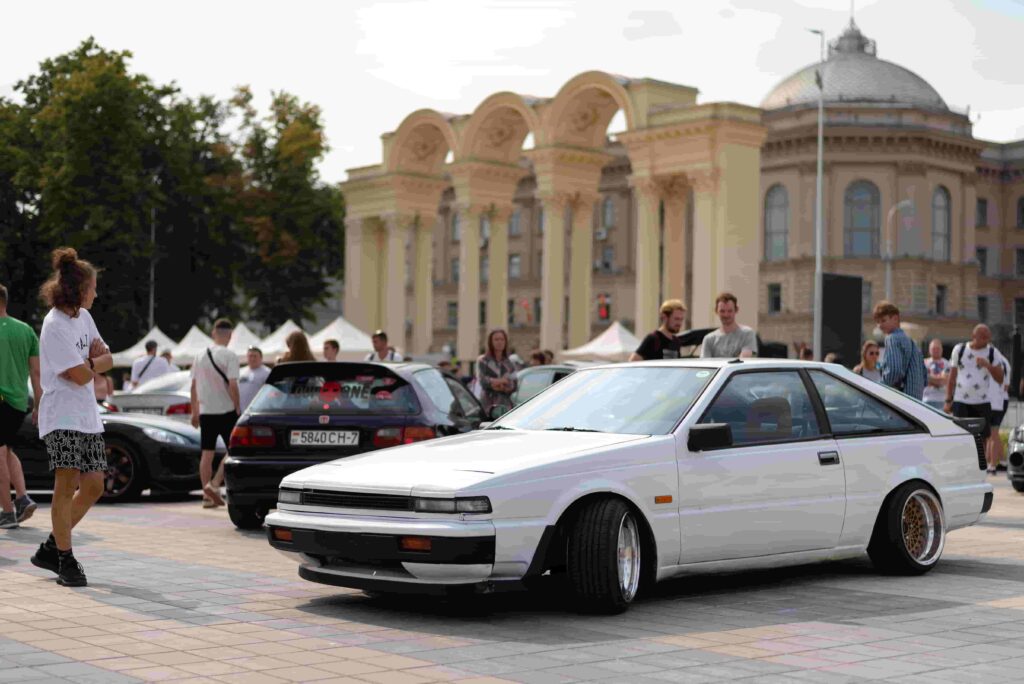
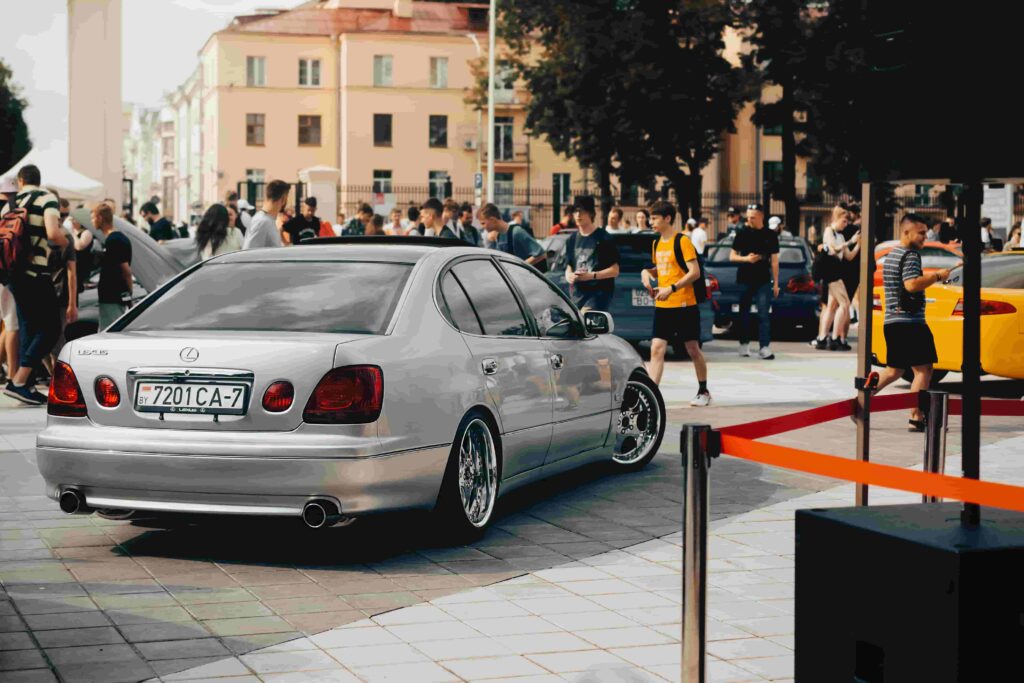
How to import a car from Japan to North Carolina.
If you are planning to import your dream vehicle into North Carolina, it’s crucial to be aware of the import regulations and rules. It’s also important to know which departments are responsible for regulating vehicle imports in the US. Currently, the two departments overseeing import regulations and domestic laws are the U.S. Customs and Border Protection (CBP) and the National Highway Traffic Safety Administration (NHTSA). Additionally, the U.S. Department of Agriculture’s Animal and Plant Health Inspection Service (APHIS) requires all imported vehicles to be free of soil, sand, pests, and plant residue, regardless of their origin. Ensuring compliance with these regulations is essential for a smooth import process and to avoid any potential penalties or delays.
Rules & Regulations for importing a JDM car to North Carolina:
The rules and regulations for importing a 25-year or older Japanese Domestic Market (JDM) car to North Carolina can be complex, so it’s important to understand the requirements before making any purchase or shipping arrangements. Here are some key points to keep in mind:
Age Requirement: The car must be at least 25 years old to be imported into the US. This means that it must have been manufactured at least 25 years prior to the current calendar year. For example, as of 2023, only cars manufactured in 1998 or earlier can be imported.
Compliance with EPA and DOT: The car must comply with US Environmental Protection Agency (EPA) and Department of Transportation (DOT) regulations. To do this, the car must pass an emissions test and meet Federal Motor Vehicle Safety Standards (FMVSS) before it can be registered for use on public roads in the US. Some JDM cars may require significant modifications to meet these requirements, while others may not be able to be modified to meet them at all.
Registered Importer: The car must be imported by a registered importer (RI), who is authorized by the US government to import non-conforming vehicles. The RI will handle the necessary paperwork, inspections, and modifications to bring the car into compliance with US regulations.
Bond: The importer must post a bond with US Customs and Border Protection (CBP) that is equal to 150% of the car’s dutiable value. This bond ensures that the car will be brought into compliance with US regulations within a specified timeframe, or else it will be exported or destroyed.
Title and Registration: Once the car has passed all necessary inspections and modifications, it can be titled and registered for use on public roads in the US. However, some states may have additional requirements or restrictions for registering imported vehicles.
It’s important to note that the rules and regulations for importing JDM cars can change over time, so it’s always a good idea to check with the EPA, DOT, and CBP before making any plans to import a car.

The process of importing a JDM car.
To initiate the vehicle importing process, simply contact us via our contact page. We offer a hassle-free experience for a reasonable fee of $700 USD, which includes several services such as:
- Ensuring the vehicle’s legality for importation into your country.
- Interpreting and translating JDM auction sheets.
- Speaking with Japanese sellers.
- Arranging pre-purchase inspections (sometimes).
- Obtaining additional pre/post pictures of your vehicle (sometimes).
- Handling customs clearance paperwork on your behalf.
- Organizing local delivery of your vehicle upon arrival.
By choosing us as your JDM importer, you gain exclusive access to the Japanese auction house inventory, which is typically inaccessible to individual buyers. With our help, you can avoid the headaches of importing a vehicle and rest assured that your purchase is made with confidence.
How to import with us.
Our import process is made as simple as possible for our clients, our mission is to make importing a JDM car as simplistic as ordering anything else online.
Step one:
Get the process started by reaching out to us through one of the methods listed on our contact page. Provide us with the details of your needs and we'll provide you with an estimated cost and answer any inquiries you may have. If the estimated cost fits your budget, you will then be required to sign our import agreement and make a refundable ¥70,000 deposit to demonstrate your commitment. This crucial step will allow us to proceed with your project.
Step two:
We will start the search for your desired vehicle, which may take an indefinite period, however, typically takes within a month or less. Our team will provide you with comprehensive auction sheets, including photos, videos, and detailed information of various cars available, and we'll be here to offer our expert guidance throughout the entire process.
Step three:
Upon selecting a car of your choice, we will place a bid on your behalf. Upon winning the bid, full payment for the car, inclusive of all fees, must be made within 4 days. The car will then be transferred to our facility in Japan for thorough inspection, cleaning, and preparation for shipment to it's destination country. The shipment process typically takes 5-9 weeks.
Step four:
Upon arrival in destination country, the car typically takes 4-5 days to clear customs. Our customs agents will thoroughly review and process the clearance, including translating and completing the necessary paperwork. Additionally, we can arrange for the pickup or logistics of the vehicle to be delivered to your desired final destination. It is crucial to remember that the final step involves passing your country's pre owned vehicle inspection requirements to legally operate the vehicle on the road. Most cars imported from Japan will require modifications to meet the inspection requirements. To ensure a seamless process, it is recommended to research and understand any necessary changes or additions to the car beforehand.

Update Times
We update our clients whenever a car within the criteria comes up, and if there are none we update you every Monday and Thursday.
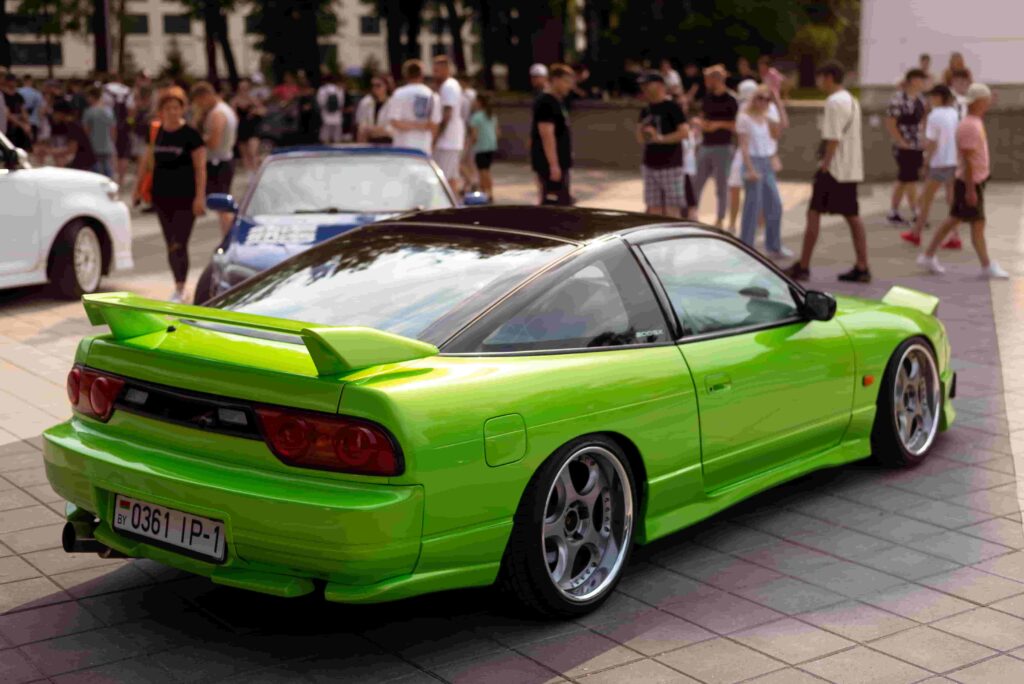
The JDM car shipping process.
Once payment has been settled, we will begin the shipment process for your vehicle. Our goal is to get your vehicle on the earliest vessel available, and the entire process typically takes between five to nine weeks from start to delivery. The bill of lading, along with other necessary documents listed below, will be issued one week after your vehicle has departed:
- Final Invoice
- Export Certificate
- Marine Insurance
- Deregistration Certificate
- Vehicle Port Clearance
When your vehicle arrives at the port, please ensure that you bring all the documents you have received from your auto dealer. This will help ensure a smooth and hassle-free clearance process from the port. Our team will provide you with a pre-communicated schedule for the delivery of your vehicle at the port.
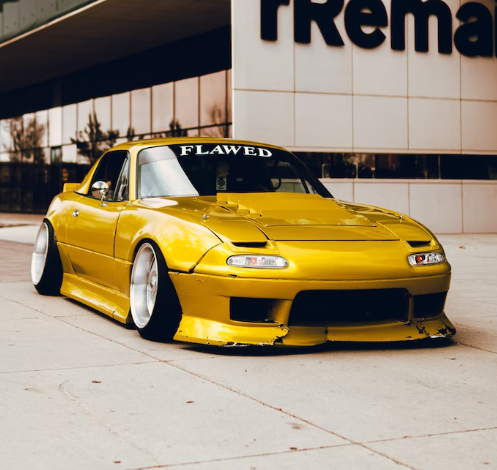
Shipping explained RO/RO VS Container.
Are you considering shipping your vehicle to North Carolina but unsure of the best method? In this article, we’ll explore two of the most popular global shipping options: Roll-on/Roll-off and Container shipping. We’ll start by examining the workings of both methods, then weigh their respective advantages and disadvantages.
RO/RO:
RORO shipping, short for Roll-on, Roll-off, involves rolling your vehicle onto the vessel by driving it up a ramp and into a designated parking area called the cargo space or deck. The cargo deck accommodates a vast number of vehicles, ranging from cars, boats, yachts, trucks, motorbikes, tractors, and many more, all securely fastened with safety leashes or straps to prevent any movement during transit. Typically, you would leave your car keys in the ignition while the ship is sailing. Upon arrival at the port of destination, the dock workers will drive your vehicle down the ramp and roll it off the vessel.
Container:
Container shipping provides an alternative means for transporting your vehicle to its intended destination. Unlike RORO shipping, which involves parking cars on a cargo deck and securing them with leashes and straps, container shipping offers a dedicated container that accommodates your vehicle. These containers come in various sizes, with 20 and 40-foot dry containers being the most common. Your car does not require strapping down when transported via container shipping. Additionally, your vehicle is not driven, and the keys are not left in the ignition. When packed inside a container, it is lifted and loaded onto the vessel using a gantry crane, thereby eliminating the need for ramps. At the destination port, a gantry crane will offload the container rather than dock workers driving your vehicle out on a ramp.
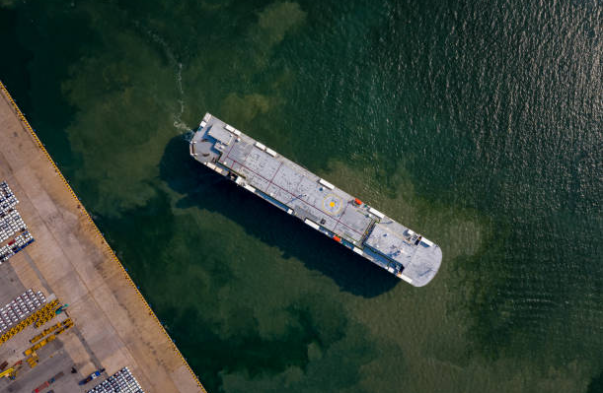
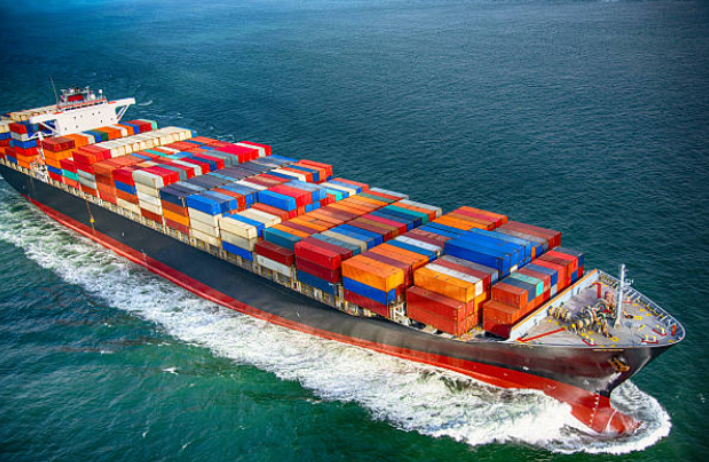
Compare RORO vs Container
To make an informed decision about the most suitable shipping option for your needs, it is essential to consider various factors such as shipping cost, transit time, safety, convenience, and availability at your destination port. In this regard, it would be useful to compare two popular shipping methods, namely RORO (Roll-on/Roll-off) and container shipping.
Availability
Before making any decisions, it is crucial to confirm the availability of Roll-On/Roll-Off (RORO) shipping at your desired port as it may not be available in many countries. Priority for RORO is often given to new vehicle manufacturers, which can cause grey market vehicles to experience delays of several weeks or even months in securing a spot on the ship.
Container shipping is widely available in numerous countries because it does not require specialized ports to accommodate loading ramps.
Time
When RORO (Roll-On/Roll-Off) shipping is an option, it typically takes less time since vehicles can be easily driven onto the cargo deck and secured for safety. To ensure a smooth process, it’s important to have some gasoline in your vehicle and ensure that it is in functional condition for driving onto and off of the vessel.
Container shipping takes longer than other modes of transportation because it involves packing vehicles separately into containers and then loading them onto vessels. However, container shipping does not require gasoline as there is no need for driving during the process.
Cost
Roll-on Roll-off shipping is widely regarded as the most cost-effective method for transporting vehicles across different countries.
Shipping your vehicle in a container can be more expensive as it necessitates a dedicated container for transportation.
Extra Parts
When utilizing RORO shipping, we cannot leave any personal belongings or other materials inside your vehicle. This is because RORO shipping involves open car transportation, which poses a safety risk for any items left inside the vehicle.
- Container shipping is slightly better in this regard because the cars are not left open in container shipping.
Ease vs Risk
RORO (Roll-On Roll-Off) shipping is a popular choice for those who want to quickly and inexpensively load and unload their vehicles. It allows for immediate access to your car after a long overseas journey. However, if your vehicle has been modified with aftermarket lowering springs or has low ground effects/body kits, it may be at the mercy of multiple drivers who prioritize speed over careful handling when loading and unloading your car off ramps.
- Container shipping involves a challenging process of loading and unloading, which may require specialized tools and take a significant amount of time. If you are importing a highly modified or non-functional vehicle this is the only method of shipping. It also gives you time to evaluate the cars condition before attempting to start it. This will ensure that any necessary repairs or maintenance are performed before the vehicle is put to use, possibly saving you time and money in the long run.
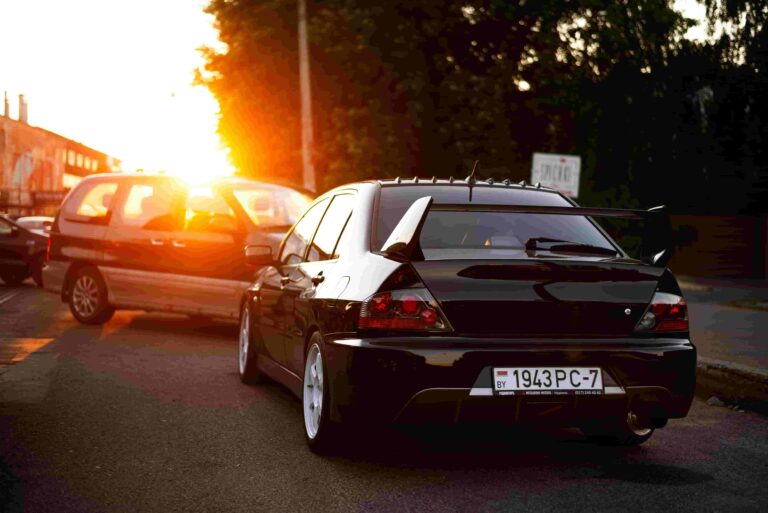
Inspection Photos
Some of our most recent JDM imports
Here are some of our most recent JDM Imports. These are the after purchase photos we take for our clients. All clients receive 70-120 photos of their new car while we do the full inspection. These photos give you a close up look of any issues and allow you to see if anything was missed on the auction sheet.
2005 Toyota Altezza RS200 Z Edition
2005 Toyota Altezza RS200 Z Edition hand picked for a Canadian customer from the Japanese car auctions, inspected & test driven prior to export. We source and export all types of hand picked vehicles (Japanese, European & US makers, LHD & RHD) for customers directly from the Japanese car auctions for immediate delivery worldwide from Japan. For more information and access to the Japanese auctions, please contact us.
1998 Toyota Chaser Tourer S
1998 Toyota Chaser Tourer S hand picked for a Canadian customer from the Japanese car auctions, inspected & test driven prior to export. We source and export all types of hand picked vehicles (Japanese, European & US makers, LHD & RHD) for customers directly from the Japanese car auctions for immediate delivery worldwide from Japan. For more information and access to the Japanese auctions, please contact us.
2002 Volkswagen Bora V6 4Motion
2002 Volkswagen Bora V6 4Motion hand picked for a Canadian customer from the Japanese car auctions, inspected & test driven prior to export. We source and export all types of hand picked vehicles (Japanese, European & US makers, LHD & RHD) for customers directly from the Japanese car auctions for immediate delivery worldwide from Japan. For more information and access to the Japanese auctions, please contact us.
JDM imports frequently asked questions. FAQ.
You probably still have many questions but Don't worry, it takes time to get the hang of this. Feel free to contact us with any questions you have, and in the meantime, have a look at these commonly asked questions.
Press/Click question to show the answer
The simple answer is yes. Several cars that go through auction will have unknown mileage though. This will always be mentioned on the auction sheet. Check on the auction sheet beside the mileage for these marks – *, #, $. Our translation will always clearly state it as well.
The seller writes half of the sheet and the auction inspector writes the other half. The seller writes the car info, sales points, and notes. The inspector writes the condition report and diagram notes. The inspector also checks the info written by the seller to make sure it’s correct.
yes you can, The auction is a third party. That means they are not affiliated with the seller. In fact, the auction gets paid whether the car sells or not. There are over 100 auctions across Japan. They are in competition with one another. If the inspections were not trust worthy at that auction, buyers would stop buying from them.
It happens from time to time when the inspector misses something on the auction report. If this happens, we can claim to the auction. Providing the auction allows for the claim, we can either be awarded a monetary refund, or the option to return the vehicle. Note that cars over 10 years old usually don’t qualify for claims on the condition of the vehicle, or the vehicle’s mechanical condition.
We will translate the sheets for you. This includes the sales points, notes, report, and the Japanese on the diagram notes. Note that Jurojin imports does full translations of the auction sheets. Most exporters only partially translate the sheets and some don’t at all.
Different auctions have slight differences in there sheets, but for the most part, this is not necessary to pay attention to in order to buy a car. The same basic formula is shared between all the major auctions.
You can buy any grade car that you like. Some people want pristine cars, some want project cars, and there are customers everywhere in between. What I have seen however is that most people buying lower grade cars end up not being completely satisfied. Unless you are an expert in building cars, it’s easy to fall into the trap of not realizing how much is involved in bringing life back into a car.
Be careful looking at the pictures of the car. The true vehicle condition is not accurately shown in the pictures. Get in the habit of reviewing the auction sheet body diagram in detail instead of looking at the pictures to gauge the quality of the vehicle. Auction sheets always describe even the smallest flaws and issues in detail, so its best to cross examine using both.


